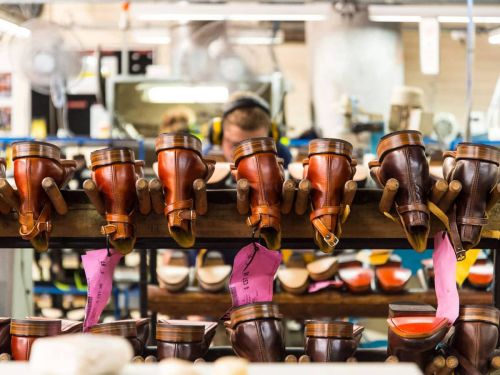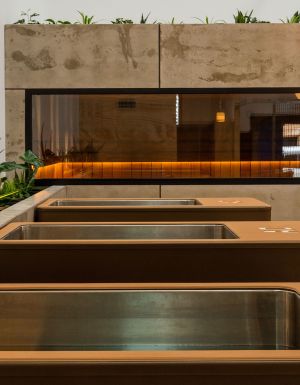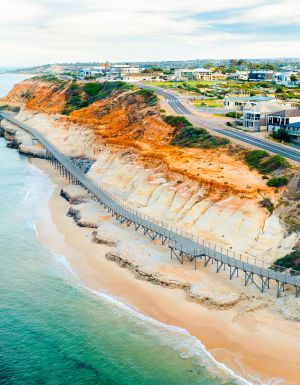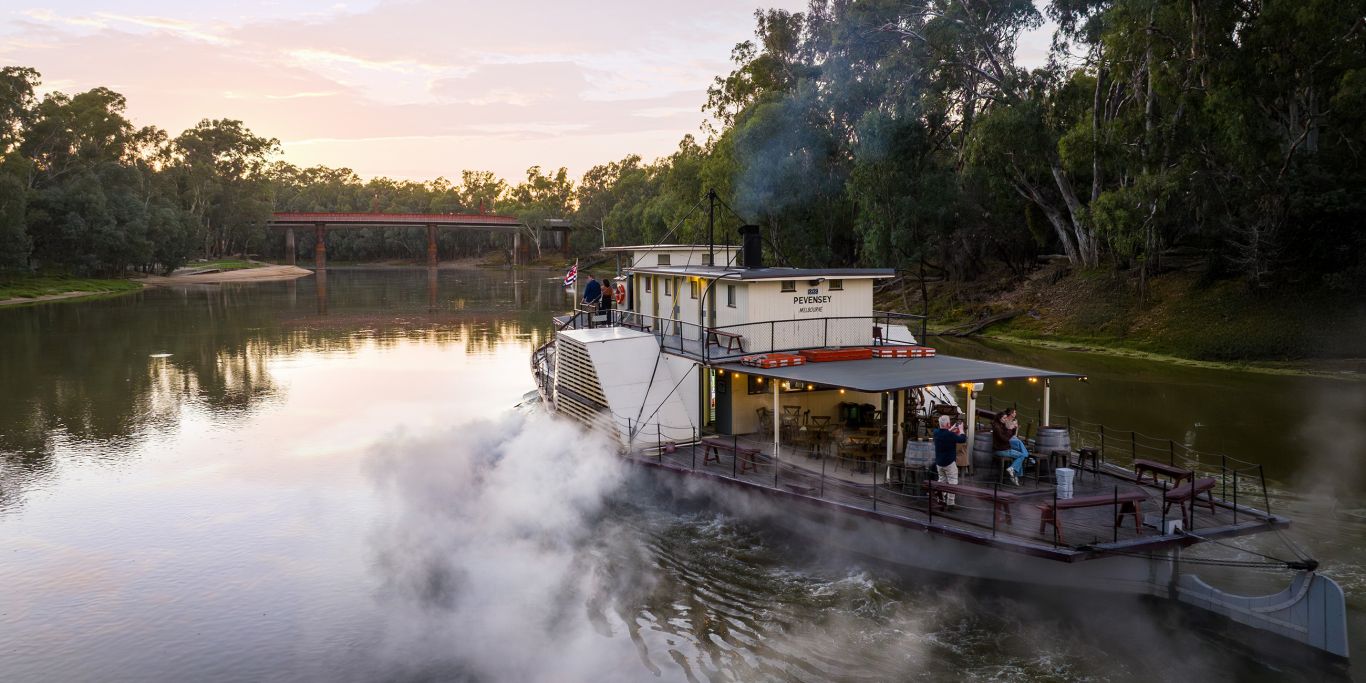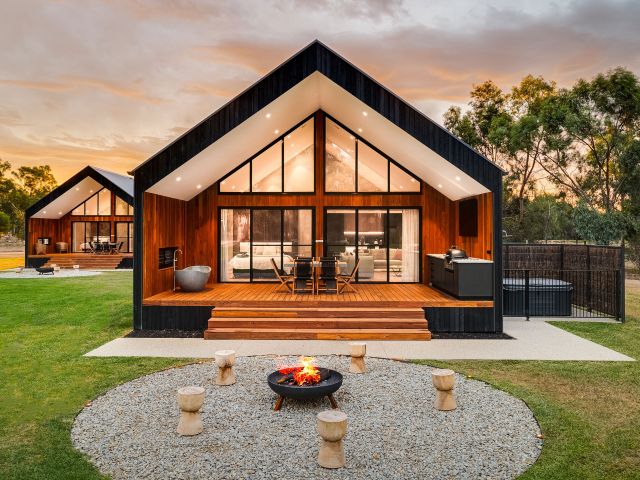On the outskirts of Adelaide, Alexis Buxton-Collins discovers a pair of modern Australian icons – and comes home with a souvenir that will last a lifetime.
“What do you see?" asks Paul Mettner as he holds up an irregularly shaped piece of leather that looks like the silhouette of a Trojan helmet. Other answers for this tactile Rorschach test include a ghost from Pac-Man or Darth Vader’s head. But for hundreds of workers around us, this is the starting point for one of Australia’s most enduring style icons.
The making of an icon
On an otherwise unremarkable street in Adelaide’s northern suburbs, the R.M. Williams workshop turns out around 1500 pairs of elastic-sided Craftsmen boots a day, and Mettner is showing me around one of the production lines that he supervises. A paragon of simplicity, the design of the signature Craftsman boot has remained virtually unchanged since the shadows of The Great Depression, when Reginald Murray Williams collaborated on the design with an Adnyamathanha man named Dollar Mick.
Crafting each upper from a single piece of leather helps to make it durable, comfortable and almost endlessly repairable, though my guide chuckles that “the reason R.M. did it that way is because there’s less sewing – the lace up boots are far more work". But any energy saved in sewing is more than made up for on a production line where every boot will be shaped by 80 pairs of hands.

Machines with names such as inseam trimmers, welt beaters and lasters call to mind a Dickensian factory, but the workers here grin and crack jokes as they stretch, steam and stitch pieces of hide. Each job takes less than 10 seconds, well-practised hands moving swiftly but surely so that a single boot takes just three hours to make from start to finish.

The repairs station
Even more impressive is the repairs station, where shoes are stripped down entirely before being reshaped and resoled. “A few tools might look a little different, but this process hasn’t changed much since 1932," says Mettner. “And as long as you look after the upper, we can repair the boots three or four times."

Unsurprisingly, the repaired boots offer a catalogue of shifting styles, from pointy toes and Cuban heels to scuffed Chelsea-style work boots whose owners have specifically requested they remain unpolished.

More than just boots
In the clothing and craft sections, workers skilfully stitch jeans and oilskin jackets, embroider shirts and painstakingly braid strands of kangaroo leather into belts with more than 1000 plaits, all of which are on display when we drive a few suburbs south to the brand’s Prospect showroom.

History in the making
Presiding over the space is Rita Stenta, an energetic woman who tells me that after honing his craft at a small workshop in the northern Flinders Ranges, Williams moved production here in the early 1930s. Back then, he worked out of a tin shed behind his parents’ house, and “it still says Percy Street on every pair of R.M.s because this is where it all began."

When she started working here in 1980, the store was filled with saddles, bridles and whips. And while styles have changed as the clientele has shifted from stockmen to stockbrokers (with a few prime ministers and rockstars thrown in), the boots have remained a constant.
Stenta has fitted some 20,000 pairs in her time, and I can’t help but admire the workmanship of my finely polished chestnut Craftsman boots as I become number 20,001. In fact, they feel so good as I slip my feet in that I decide to keep them on while I visit another South Australian icon.
Another SA icon: Penfolds Magill Estate
A three-course lunch with matched wines gives me plenty of time to take in the views at Penfolds Magill Estate , where five hectares of shiraz vines grow in the shadow of the Mount Lofty Ranges. Then I get a chance to test out my new kicks as we stroll down to the cottage where Dr Christopher and Mary Penfold lived when they established Australia’s most storied winery in 1844.

Just over a century later, legendary chief winemaker Max Schubert began developing a program of cellar-worthy reds that would change the Australian wine industry forever. As we enter the network of tunnels below the winery, our guide casually points out Schubert’s handwritten instructions for making Grange before showing us the indent where he erected a fake wall to hide his pet project from disapproving bosses.
Back at the cellar door, we taste ‘the white Grange’ Yattarna and elegant St Henri before moving on to the main event. Our guide explains that Grange has earned its place in the pantheon of Australian wines with a blend of ageability, quality and consistency. “Look after it well, and a bottle will last decades," she tells us. Add in a few notes of leather, I think, and she could just as easily be talking about another icon located within Adelaide’s city limits.

The R.M. Williams Factory Tour is available exclusively through The Tailor Touring Co. Prices begin at $810 per person, including a personally fitted pair of boots to take home.


